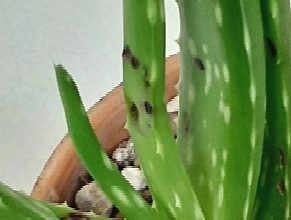Plant a Cypress: [Cultivation, Care, Pests and Diseases]
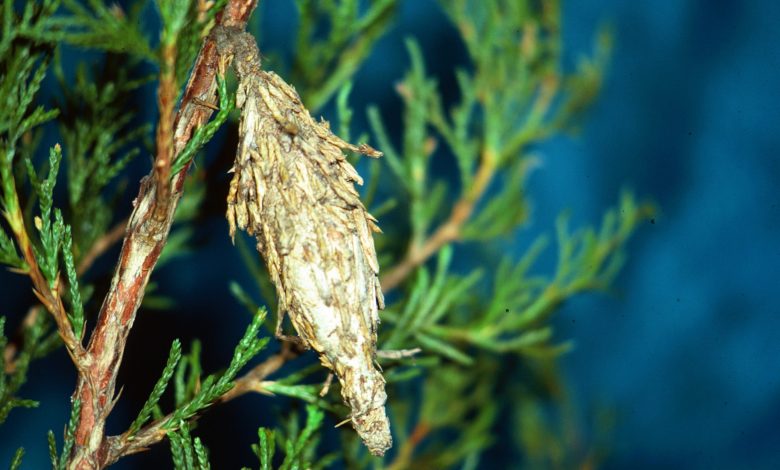
Important points when planting a Cypress
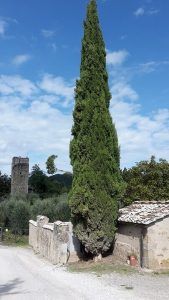 When is it planted? There are species that can be sown throughout the year, except for the summer months. And others have a better response in late winter.
When is it planted? There are species that can be sown throughout the year, except for the summer months. And others have a better response in late winter.- Where? It can be planted in a pot and in the garden, either as a hedge or an ornamental plant.
- How do we prepare the land? It does very well in a pot with a layer of clay and universal substrate, with an addition of 30% perlite. In the garden, a sandy soil with good permeability is sufficient.
- How do we water? Drip irrigation, so as not to saturate the soil, is ideal.
- How often do we water? Twice a week will suffice. Not wetting the foliage prevents diseases such as fungi.
- What pH level does the soil need? Any sandy soil will do well, or chalky, with a pH >7.
- When should you prune? If grown as a hedge, they must be pruned regularly to keep them stimulated and harmonious in growth.
- What pests and diseases do they have? Fungi, mealybugs and borers.
When to plant a cypress?
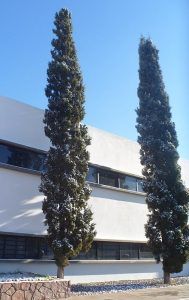 The cypress is an evergreen tree with an elegant bearing, belonging to the family of conifers, especially effective for forming protective hedges against the wind.
The cypress is an evergreen tree with an elegant bearing, belonging to the family of conifers, especially effective for forming protective hedges against the wind.
Long-lived, cypresses can reach a height of up to 30 meters in their natural habitat, but they also work very well as an ornamental plant, because they are quite resistant.
The Leylandii variety is very popular worldwide and can be grown in a pot, so its plantation is successful at any time of the year. But there are more than thirty very showy species. In the Mediterranean region they abound a lot.
However, there are other species that should be sown when winter is about to end, shortly before they resume their growth. This makes it much easier for them to recover.
Where to plant a cypress?
The cypress can be cultivated by so-called spring sowing, with direct support in containers or cultivation pots, which can reach a total volume of about 200-300 cm3.
In this environment, specimens that reach between 10-15 cm in height are achieved.They also do well in gardens, as ornamental plants. Commercially, they are grown in South Africa, New Zealand, and East Africa. They are also showy in European gardens and in Asian temples. They are actually everywhere.
How do we prepare the soil and what pH level is ideal?
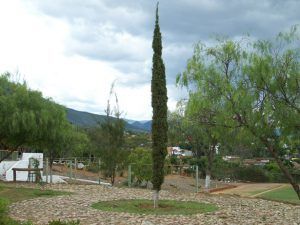 They prefer loose, sandy soils, but they have the characteristic of generally adapting to any type of terrain, because, as we have already said, they are quite resistant.
They prefer loose, sandy soils, but they have the characteristic of generally adapting to any type of terrain, because, as we have already said, they are quite resistant.
Not surprisingly, they have managed to survive on this planet for about 300 years. Perhaps for this reason, the ancient Persians paid tribute to the cypress as a symbol of strength and eternal life.
That is why they are also seen in cemeteries, as true guardians of eternal life.This long life has much to do with the high resistance of conifers in general, accustomed to adapting to environmental changes that occurred hundreds of years ago on Earth.
A very suitable type of soil is limestone, rich in calcium carbonate, very predominant in the Mediterranean region. Its pH>7.
How often do we water and how do we do it?
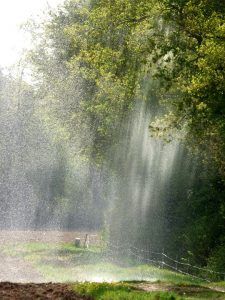 Cypresses are delicate in the amount of water they have to receive, because they are very sensitive to excess moisture, which causes rotting of their roots and irreparable drought of their leaves, which turn brown until they fall off., as a result of a disease caused by fungi that attack the tree if we do not know how to water and care for it.
Cypresses are delicate in the amount of water they have to receive, because they are very sensitive to excess moisture, which causes rotting of their roots and irreparable drought of their leaves, which turn brown until they fall off., as a result of a disease caused by fungi that attack the tree if we do not know how to water and care for it.
Depending on the prevailing climate, a cypress should at most be watered once or twice a week. Perhaps up to three times, but as long as the tree is in a warm area, where the ground remains less wet.
Most of them cannot stand flooding, especially the so-called blue cypress or Cupressus arizonica, a well-known species that tolerates great droughts and avoids excess water.So watering should always be moderate and it is not recommended to wet the foliage.
Moreover, they can stop being watered after the third year as long as they are planted in the ground and in places where annual rainfall averages 300-400 millimeters per year.
How to plant a cypress step by step?
A preliminary consideration is the knowledge that the cypress has delicate roots, easily vulnerable to handling, so it is not wise to change their pot or place when they are planted in the garden. The place where it is planted must be definitive.
Pot planting is usually successful, let’s see how to do it step by step.
sowing in a pot
- You must choose a pot with a good filtering system (holes in the base) and estimated measurements between 5-6 centimeters (cm) in diameter and a higher height.
- Inside, you must prepare the following soil mixture: first add a layer of about 3 cm of clay balls and then add a good universal substrate with 30% perlite.
- Now follows the transplant of the cypress from the original pot to the new one. Extract the root ball very carefully and make sure that the roots are not damaged. It is necessary to avoid that there is an excess or lack of substrate. It should be comfortable. Neither too low nor too high.
- Complete the filling until the entire substrate around the tree looks compact and water carefully, avoiding puddles.
planting in the garden
- The first thing will be the choice of the sunniest and widest place in the garden, where we also have very fertile, loose soil and a good drainage system.
- A great detail about the final place of planting is that it is distanced about 7 meters from pipes and walls or electrical installations. And if you want to create a hedge, you have to keep a distance between each cypress of about 50 centimeters.
- After having established the planting site, a hole of at least 1 square meter in length should be dug, which should be filled with expanded clay, so that a layer about 20 centimeters thick is formed.
- Continue to fill with a good universal substrate.
- The cypress is then taken from the temporary pot and carefully removed, so as not to damage the roots. Immediately afterwards, it is introduced into the hole and covered with soil, until the ground is level.
- Water sparingly, always avoiding stagnant water.
To learn more, you can see: Cypress cuttings.
What care does a cypress need?
This conifer does not require great demands, in general terms it is an all-rounder capable of living for many years, but there are some keys that we must know so that they always have spectacular foliage.
Climate
 The cypress, contrary to what is believed, is not a friend of intense cold or heavy snowfall. Rather it needs a mild and temperate climate to grow without problems.
The cypress, contrary to what is believed, is not a friend of intense cold or heavy snowfall. Rather it needs a mild and temperate climate to grow without problems.
It is quite resistant to drought and really likes the Mediterranean area.It likes sunny days and environments that are not extremely dry.
Irrigation
In fact, the high tolerance to dry soils is an advantage when times are low in water, because the cypress will not miss daily watering.The recommended thing, both in a pot and in the garden, is to let the ground ask for water again.
As we have already said, never saturate the land where the cypress lives because it will be attacked by fungi that can kill it.
Pass
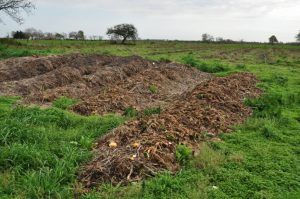 It is essential to provide good food to the land where a cypress grows. A good fertilizer from early spring to late summer is essential to stimulate healthy growth.
It is essential to provide good food to the land where a cypress grows. A good fertilizer from early spring to late summer is essential to stimulate healthy growth.
We can use conifer fertilizers, but selecting an annealed brand is important, also guano is superior and highly recommended, as well as a good quality mulch and compost.
Pruning
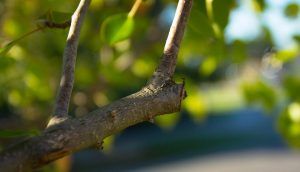 Although in general terms it is not necessary to prune it regularly in ornamental cultivation conditions, it must be done so that it does not alter the harmonic balance of the garden.
Although in general terms it is not necessary to prune it regularly in ornamental cultivation conditions, it must be done so that it does not alter the harmonic balance of the garden.
Similarly, the opposite happens if we seek to create a hedge. Here it will be essential to carry out regular pruning because there are large species that can exceed 30 meters in height.
The most advisable thing is to apply a good pruning in spring, but being clear about how much the species we cultivate can grow, since the cypress usually develops, grow very quickly after pruning, because it acquires greater vigor and vitality.
What pests and diseases attack the cypress?
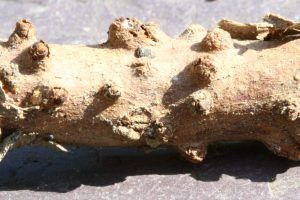 It is not often that they get seriously ill, but when the drought is too pronounced and the climate is very dry, cochineals and borers appear, very annoying insects that should preferably be combated with natural or organic insecticides.
It is not often that they get seriously ill, but when the drought is too pronounced and the climate is very dry, cochineals and borers appear, very annoying insects that should preferably be combated with natural or organic insecticides.
Another evil of greater care is that the tree is attacked by Seiridium fungi. It is not advisable, therefore, to water frequently but rather to check the degree of humidity of the soil and apply corrective measures immediately.
A good specific fungicide applied following the instructions for use protocol will be a very good remedy.There is good availability on the market. The Compo brand has one called Anti-browning of conifers, easily located on the internet.
All pests are well controlled with support in diatomaceous earth and correct watering and fertilization. Failure to do so will bring diseases and pests that can lead to the death of the cypress.
How long does the cypress live?
Cypresses manage an estimated life span of 300 years, especially in spaces where the environmental conditions are optimal for them.
How long does it take to grow the cypress?
It takes its time to develop all its imposing structure, so we will have to wait up to 20 years or more to see the adult version.
How long does it take to produce fruit?
Cypress trees are able to start their fruit production about 5 years after planting.
Can it be grown in a pot?
It is tolerant to pot cultivation without major inconveniences. The only thing is that in this case you have to be more attentive to offer the care it requires.
How many times does the cypress produce fruit?
The normal thing for the cypress is that it produces fruit only once a year.
Should the cypress be pollinated to obtain fruit?
Pollination occurs by action of the wind, causing in places where there are many trees of this type an effect known as cypress allergy.
The reason is that tree pollen fills the entire air, affecting the people around it.
How cold can cypress tolerate?
It is a species that is endowed with internal resources to withstand cold and frost, so there should be no concerns in this regard.
How many cypresses can be planted per hectare?
The average cultivation of cypresses in one hectare is 250 to 300 specimens.
How much heat and/or drought can cypress tolerate?
It has no problems with heat or drought.
In fact, studies are being carried out on some varieties of cypresses due to the fact that they are resistant to fire.

![Photo of Pomegranate Tree: [Cultivation, Care, Irrigation, Substrate, Pests and Diseases]](https://www.complete-gardening.com/wp-content/uploads/2022/08/pomegranate-tree-cultivation-care-irrigation-substrate-pests-and-diseases-390x220.jpg)


